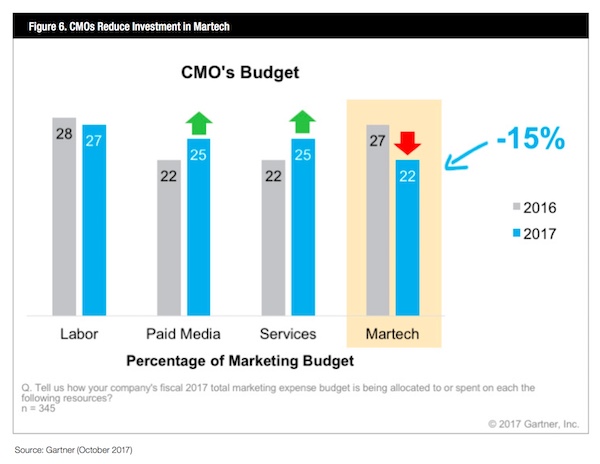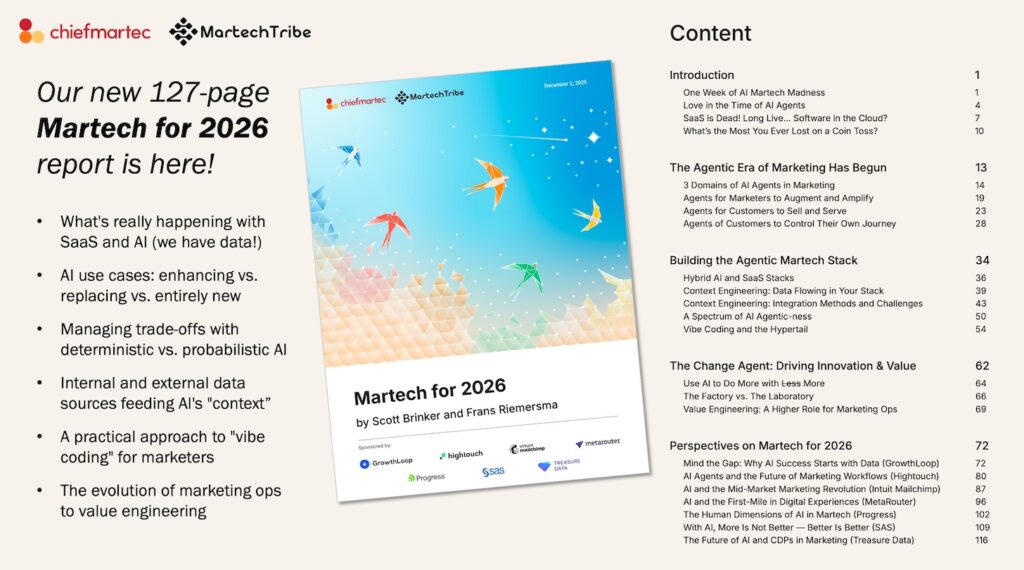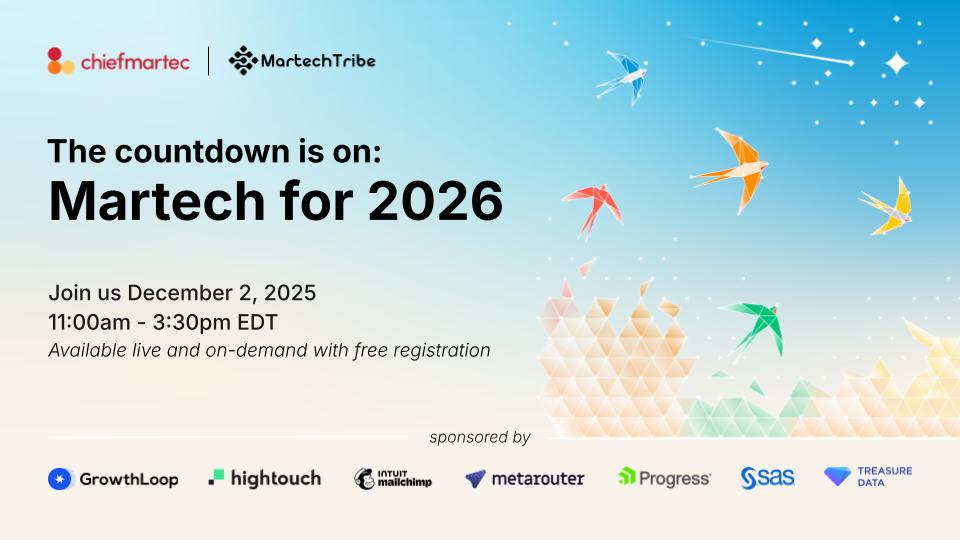Gartner recently released their CMO Spend Survey 2017-2018. The headline of their report: Budgets Recede Amid Demand For Results.
Let’s hear it for results!
After three consecutive years of growth, average marketing budgets at enterprise companies (most of the companies Gartner surveyed have more than $1 billion in revenue) have slipped from 12.1% of company revenue in 2016 to 11.3% in 2017.
And of particular interest to readers of this blog, the percentage of the CMO’s budget that is allocated towards marketing technology — martech — dropped by 15%, from 27% of the CMO’s budget in 2016 to 22% of his or her budget in 2017. Meanwhile, advertising clawed back some of that cash, as spending on paid media increased from 22% to 25%.
Is this a sign of the impending martech-zombie apocalypse?
Probably not. (If you’re looking for zombies in marketing technology, check in on those set-it-and-forget-it nurture campaigns configured in your marketing automation platform 2-3 years ago.)
As Gartner points out, “marketing budgets are tied to business performance, and 2017 has been a year of significant macro-environmental upheaval, in terms of both global politics and natural disasters.” Marketing is still seen a relatively elastic expense. The pull back from peak marketing budgets in 2016 to their 2015 levels (only a 7% drop) doesn’t seem unreasonable in that context.
The 15% drop in martech spend sounds more surprising, at first, until you consider three things:
- Enterprise CMOs are still allocating 22% of their budget to marketing technology, and that is a large investment. For a billion-dollar company, that’s $25 million. (You can run a lot of SaaS subscriptions on your credit cards for that.) Frankly, the fact that is was 27% last year struck me as high at this stage of marketing’s evolution, where machines haven’t replaced humans (yet).
- As mentioned above, some of the cash pulled from martech was reallocated to paid media — but within advertising, it’s notable that 67% of CMOs are increasing their digital spend while 63% are decreasing offline spend. That’s in spite of the problems with ad fraud and ad blockers. Although the big reason for this shift is simply following where consumers are going, Gartner notes that measurability and analytics are significant drivers too. That is martech-adtech-madtech at work.
- The other place where martech cash moved was services, which rose from 22% to 25% as well. Combined with the 27% of the marketing budget allocated towards internal staff, CMOs are spending over half of their budget (52%) on people. This is where budget should be going! Martech is an enabler, and with the right technology and the right people, you can gain tremendous digital leverage. But finding and developing people on staff takes time, so an increase in service spending is a faster way to leverage talent on-demand.
Another way of looking at this is for every $1 spent on marketing technology, $2.36 are spent on internal staff and external services. That’s a far cry from Avinash Kaushik’s famous 10/90 rule — albeit from 10 years ago — which advises spending $9 on people for every $1 spent on technology.
It will be interesting to watch this balance of spending between technology and talent over the next several years. A movement to rationalize marketing technology stacks — don’t spend money on software that you’re not really using effectively — and invest more in the people and process side of the triangle — should keep martech spending in check.
But as artificial intelligence continues to transition from hype to pragmatic applications in case after case across marketing’s domain, increasingly smart and (semi-)autonomous SaaS may increase spending on technology at the cost of other items in the marketer’s budget. Some “services” may increasingly be provided by great machine intelligence and automation behind the scenes.
In the meantime, it’s worth pausing for a moment to reflect that having 22% of enterprise marketing budgets earmarked for “martech” is a testament to just how far the marketing technology industry (and profession!) has come in the past 5 years. In the scheme of things, the world changed quickly.
It will change even faster in the next 5 years ahead.





Nicely summed up and very insighful post, Scott!
However, this report B2C Marketing Automation Report India 2017, produced by Research NXT in association with Netcore might also interest you to know how marketing automation solution (MAS) providers, B2C Marketers, specifically, are tapping into the power of automation to create new efficiency and optimize their communication efforts to focus on their consumers. One get their free copy here – http://bit.ly/2hUCJyX
What employee size or revenue $$ are defining enterprise for this report?
Indeed, insightful. This trend is too obvious. Across the Marketing horizon, the world over, 2016 year has been of integrating and implementing the technology & tools hype, be it Digitization or MarTech Optimization, however, 2017 is being a year of course correction – improving visibility among the cluttered space of technology-enabled marketing & branding. As brands are drying consumer outreach and engagement using the organic reach & inbound channels, pushing these using paid media & outbound mediums is obvious and will continue to grow in coming years.